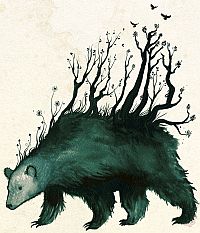Wikipedia
R.H. Allen:
Star Names
Ian Ridpath:
Star Tales
Universe Guide
Sea and Sky:
Constellations
IAU
Map
NASA:
Constellations
|
Wikipedia |
R.H. Allen: Star Names |
Ian Ridpath: Star Tales |
Universe Guide |
Sea and Sky: Constellations |
IAU Map |
NASA: Constellations |


|
|
Star LoreUrsa MajorPart 2 - Europe |
|


 Karlsvagn Karlsvagn |
Ursa Major is the most prominent constellation in the in the northern
celestial hemisphere.
 It is one of the 48 original Ptolemaic Constellations.  Early European cultures visualized the asterism now know as the Big Dipper as a chariot or wagon.  Later, a variety of other interpretations - from plows to saucepans - emerged. |


|
|
Celtic Mythology
In Ireland and on the British Isles, the asterism now called the Big Dipper was originally known as the Great Wain (i.e. wagon), Arthur's Wain,
Charles's Wain or the Butcher's Cleaver. The terms Charles's Wain is derived from the still older Carlswćn, based on the Anglo-Saxon word
Churl for man, - similar to the Karlsvagn (Man’s Chariot) in Viking and Norse mythology.
|

|
In 1914, the Starry Plough became a political symbol by Irish Republican and left wing
movements.
 Source: Wikipedia |


|
|
Nordic and Viking Mythology
In Norse mythology, the Big Dipper was seen as a wagon driven by a god.
|
 Karlsvagn;
Jonas Persson
Karlsvagn;
Jonas Persson
|
 Sources: Wikipedia, Jonas Persson: Norse Constellations, Richard Denning: What did Vikings and Saxons call the stars |


|
Medieval Germany
The Nordic version of the wagon has survived in Germany and Scandinavia.
|

|



|
 Finish Bear Spirit
Finish Bear SpiritSource: Pinterest |

|
|
Hungary
In Hungarian, the Big Dipper is commonly known as Göncölszekér (Göncöl's Wagon) or, less often, as Nagy Göncöl (Big Göncöl).
|
 Hungarian shaman reenactor
Hungarian shaman reenactorSource: Wikipedia |

|
 Perkūnas
PerkūnasSource: aminoapps.com |


 |
Back to Ancient Beginnings | Forward to Asia |
 |


|
Back to Star Lore |
Back to Mythology |

Back to Ursa Major |
Back to Space Page |
Back to English |
 Back to Start Page |